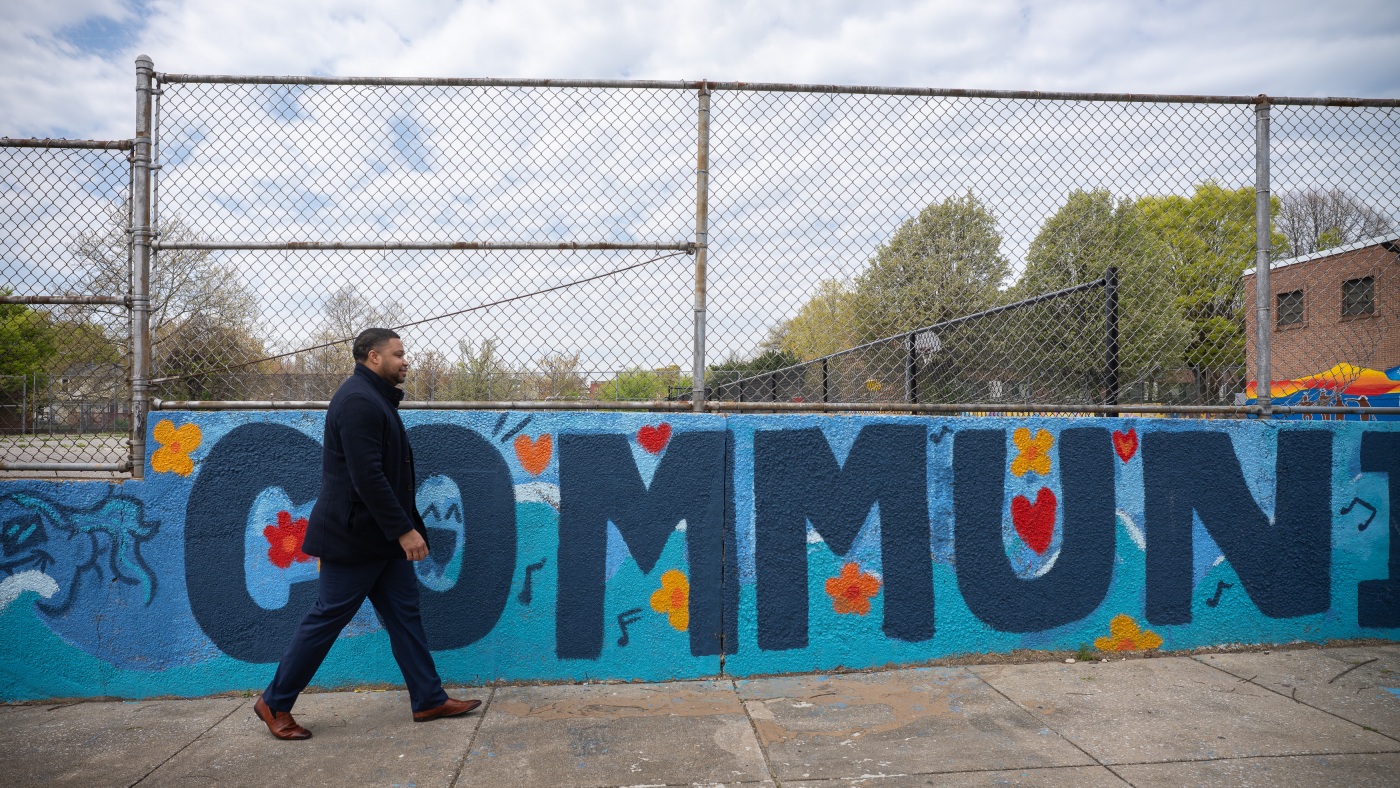Photo credit: www.npr.org
Tracey Malone, the executive director of the Sandtown-Winchester Community Collective, stands in front of a closed recreation center in Baltimore.
Reflecting on her upbringing, Malone emphasized the tight-knit nature of the Sandtown-Winchester community. “It’s a loving community. Neighbors genuinely care for one another,” she stated. Despite the colorful murals that adorn the recreation center’s exterior, the facility has been shuttered since 2021, leaving local youth with limited options for engagement. Malone, a long-time resident, expressed her commitment to the area, stating, “I grew up here and have deep ties—my mom still owns a home, and my brother was tragically murdered here. I am dedicated to giving back to this community because he was someone who always helped others.”
Once a vibrant hub of Black culture in Baltimore, Sandtown-Winchester has seen a decline over the years. For local advocates like Malone, the ongoing closure of the recreation center symbolizes the community’s enduring struggles and reflects broader issues regarding the future of Sandtown.
“Where’s the hope? Ten years later, we’re still standing here,” Malone lamented. “Where’s the change?”
In April 2015, the death of Freddie Gray, a 25-year-old resident of Sandtown-Winchester, thrust the neighborhood into the national spotlight. Gray’s encounter with local police led to severe injuries that resulted in his death a week later, sparking widespread protests across predominantly Black communities in West Baltimore. The unrest marked a pivotal moment, drawing attention to systemic issues in policing and community relations.
During the protests following Gray’s funeral, demonstrations included instances of violence, notably the destruction of a CVS store in Sandtown, which became an emblem of the community’s frustrations and struggles.
“Freddie Gray was just the catalyst that ignited the frustrations,” remarked Pastor Duane Simmons of Simmons Memorial Baptist Church in Sandtown. The church has been a cornerstone of support, providing food aid and assistance to many in need. Inside, the church infrastructure shows wear, yet it remains committed to serving the community.
Pastor Simmons noted, “We assist over a thousand individuals dealing with addiction issues and provide meals to hundreds weekly—all without any budget.” The church remained open continuously for three and a half weeks following Gray’s death, offering a refuge for those in turmoil.
In the aftermath of the unrest, political leaders made promises of investment and reform aimed at revitalizing the community. Former Mayor Stephanie Rawlings-Blake pledged $4.2 million for youth programming, while a partnership with Maryland’s governor initiated a project to eradicate blight in the area.
Despite these commitments, community leaders like Pastor Simmons believe many promises remain unfulfilled, leading to diminished attention on the neighborhood after a decade. “The politicians seldom visit the community. They are more at ease mingling with the affluent than engaging with the local residents,” he expressed.
Nonetheless, some efforts have led to positive developments. A Department of Justice investigation into the Baltimore Police Department resulted in a consent decree in 2017 to address systemic issues, including racial profiling. That year also saw the reopening of a renovated police facility aimed at enhancing community relations.
Challenges persist in Sandtown, as highlighted by City Councilman James Torrence. “We faced tragedy when a young girl was murdered outside the recreation center,” he mentioned. “The center’s closure has prolonged the challenges faced by our youth.”
Torrence emphasized the importance of community involvement in planning for the future. “People feel neglected and apathetic, but we strive to earn their trust,” he said, highlighting the community’s input in the development of the new recreation center. Plans are underway for a $26 million facility, expected to break ground by 2027, with strong emphasis on the desires of community leaders, particularly the women at the forefront of this movement.
Tracey Malone remains hopeful that the new rec center will help forge connections among the youth of Sandtown, just as it did for her in the past. “This community still needs to heal. Togetherness is crucial for that healing,” Malone stated. “Despite the challenges we face, we are cultivating hope here in Sandtown, and the spirit of this community endures.”
Source
www.npr.org

